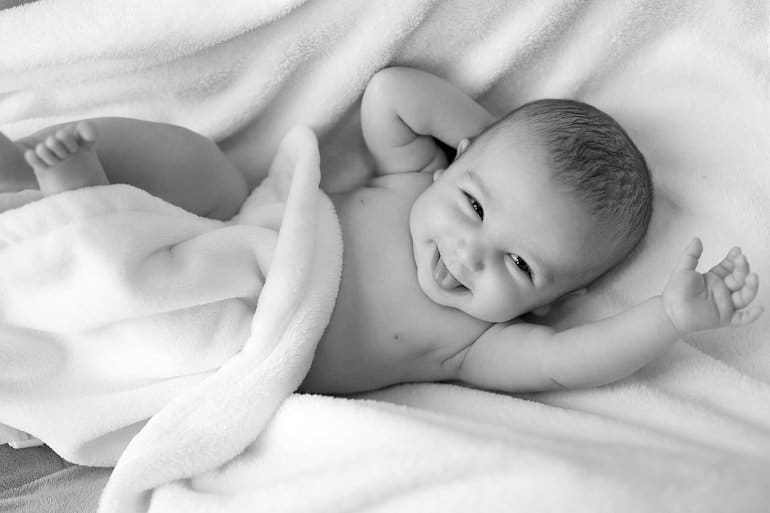Summary: Infants as young as 14 months can contemplate several alternatives on their own if they have been exposed to an object that is not clearly recognizable and is open to interpretation.
Source: Central European University
In a new study published in Philosophical Transactions of the Royal Society B, scientists from Vienna-based Central European University have found that babies as young as 14 months old can consider several alternatives on their own if they have been shown an object that is not clearly recognizable and leaves several interpretations open.
By measuring the pupil diameter of infants, the research performed by Nicolo Cesana-Arlotti (John Hopkins University), Balint Varga and Erno Teglas (both from Central European University) provided evidence of increased mental effort when infants were exposed to situations compatible with several alternative hypotheses.
These results indicate that the basis for our imagination and the ability to think about alternative possibilities is present very early, before infants can speak.
The ability to imagine and compare several possible scenarios plays an enormously important role—both in the arts and sciences and in everyday life.
For example, when we want to order food in a restaurant, we often compare different alternatives (sushi or steak?), consider possible hypotheses (is raw fish or grilled meat one of the restaurant’s specialties?) and play out different scenarios (if the raw fish were the flagship dish of the kitchen, most customers will order sushi).
This ability to consider multiple possibilities is therefore fundamental in order to be well prepared for possible future events.

Researchers from the Cognitive Development Center at Central European University (CEU) presented 10- and 14-month-old infants with video animations where three different objects (a doll, a toy elephant and a ball) moved behind two screens. Importantly, all objects in these animations had one thing in common: their upper part looked the same.
Thus, when an object emerged from one of the screens but remained in partial occlusion—revealing only its top part—this object was compatible with a varying number of possible identities.
While in some scenarios it was compatible with one possibility only (i.e., the elephant), in some other cases it was compatible with two possibilities (i.e., the doll or the ball). Then they compared the pupil diameter registered during the two scenarios.
The investigations showed that the pupils dilated more when the infants looked at a scene that left several possibilities open than when the object being viewed could be unambiguously identified.
These results also reinforce the assumption that young children can mentally map several alternative possibilities on their own in response to unclear circumstances.
About this neurodevelopment research news
Author: Press Office
Source: Central European University
Contact: Press Office – Central European University
Image: The image is in the public domain
Original Research: Closed access.
“The pupillometry of the possible: an investigation of infants’ representation of alternative possibilities” by Nicolò Cesana-Arlotti et al. Philosophical Transactions of the Royal Society B: Biological Sciences
Abstract
The pupillometry of the possible: an investigation of infants’ representation of alternative possibilities
Contrasting possibilities has a fundamental adaptive value for prediction and learning. Developmental research, however, has yielded controversial findings.
Some data suggest that preschoolers might have trouble in planning actions that take into account mutually exclusive possibilities, while other studies revealed an early understanding of alternative future outcomes based on infants’ looking behaviour.
To better understand the origin of such abilities, here we use pupil dilation as a potential indicator of infants’ representation of possibilities.
Ten- and 14-month-olds were engaged in an object-identification task by watching video animations where three different objects with identical top parts moved behind two screens. Importantly, a target object emerged from one of the screens but remained in partial occlusion, revealing only its top part, which was compatible with a varying number of possible identities.
Just as adults’ pupil diameter grows monotonically with the amount of information held in memory, we expected that infants’ pupil size would increase with the number of alternatives sustained in memory as candidate identities for the partially occluded object. We found that pupil diameter increased with the object’s potential identities in 14- but not in 10-month-olds.
We discuss the implications of these results for the foundation of humans’ capacities to represent alternatives.






